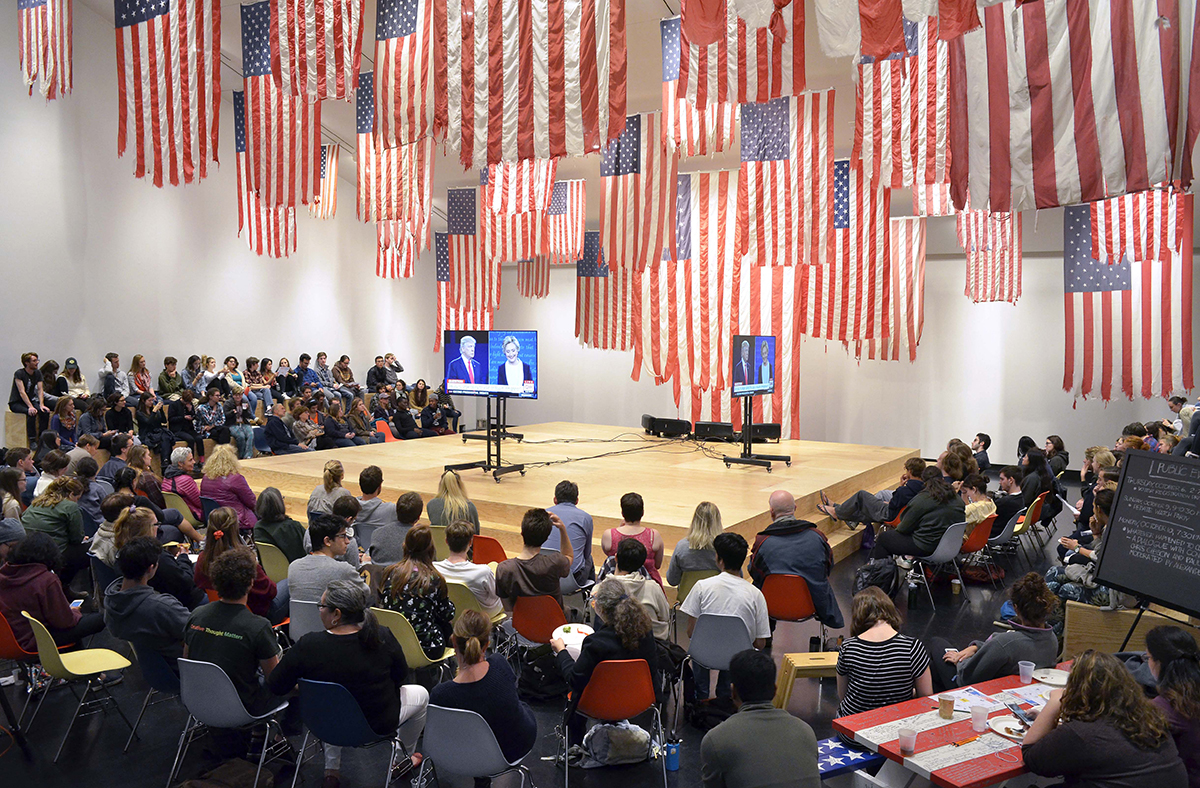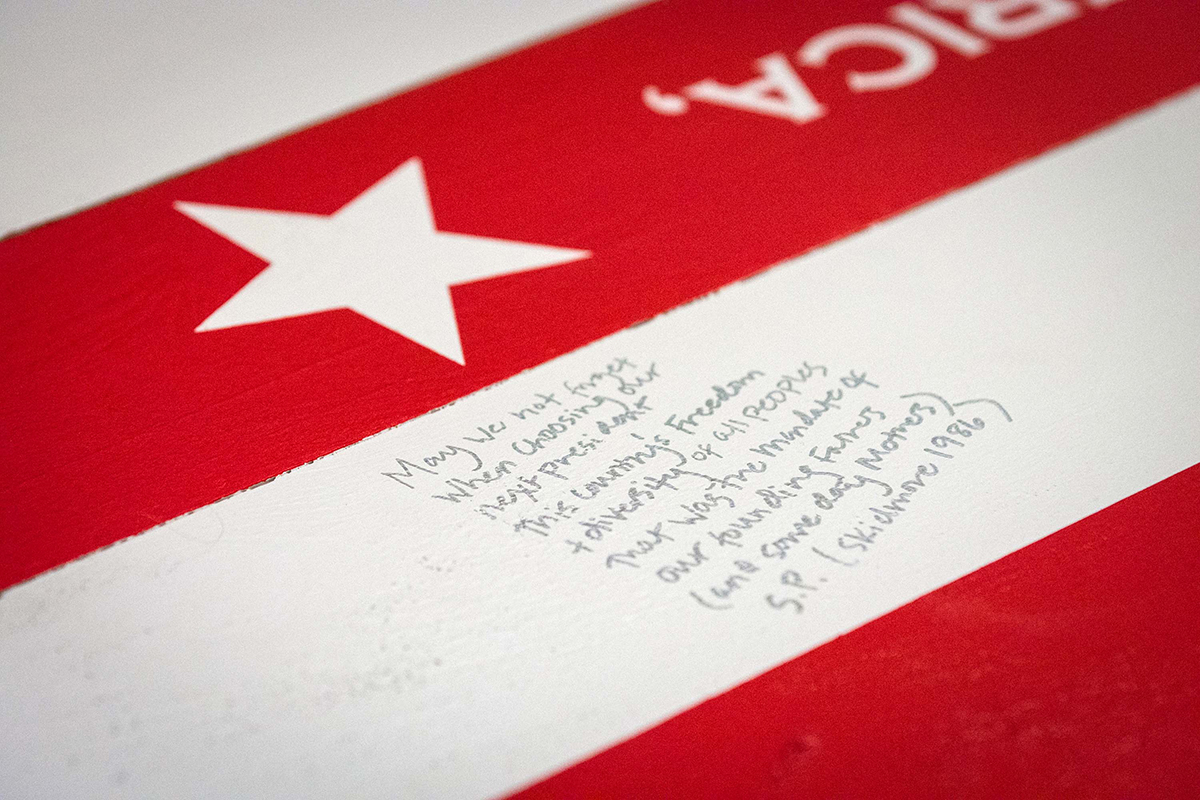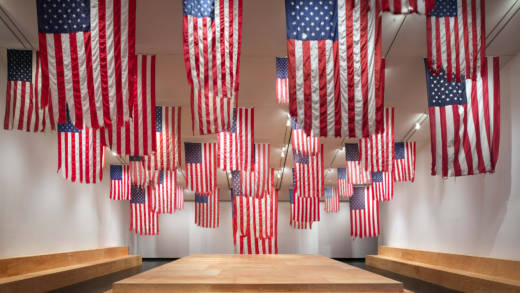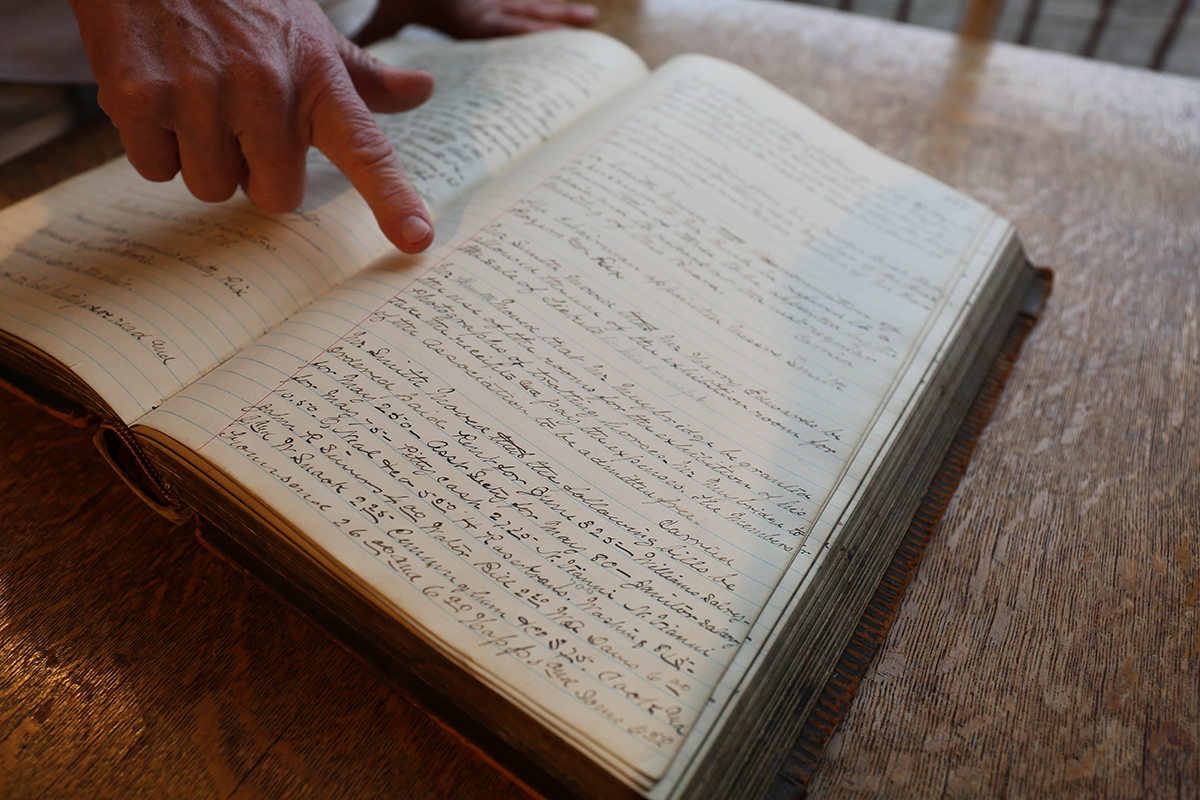The United States Flag Code, written in 1923 and made public law in 1942, outlines the rules by which U.S. flags may be displayed, saluted and disposed of (perhaps surprisingly: “in a dignified way, preferably by burning”).
But not all flag-flying locations adhere as strictly to the code as its original authors might have intended. Flags fly at all hours, not just sunrise to sunset, and often without illumination. For reasons too many to enumerate, they endure rain, sleet, snow and sun; they fly tattered and faded.

The exhibition A Living Thing, now on view at the San Francisco Art Institute’s Walter and McBean Galleries, is a catalog of these hard-working flags. Between 2011 and 2016, Nashville-based artist Mel Ziegler journeyed throughout the U.S. negotiating the exchange of used flags for new flags.
As in their previous presentation at New York’s Tang Museum, the 50 flags of A Living Thing hang vertically in various sizes and states of disintegration around a square stage, a space organizers Hesse McGraw and Katie Hood Morgan plan to fill with an open call for actions, performances, conversation or debate.

For McGraw, Ziegler’s work is rooted in an empathy for the non-urban environment. The story of each flag exchange remains between Ziegler and the anonymous flag owners, many of whom were embarrassed by the state of their stars and stripes. “This unseen thing is the real substance of work,” McGraw says of the exchanges.




